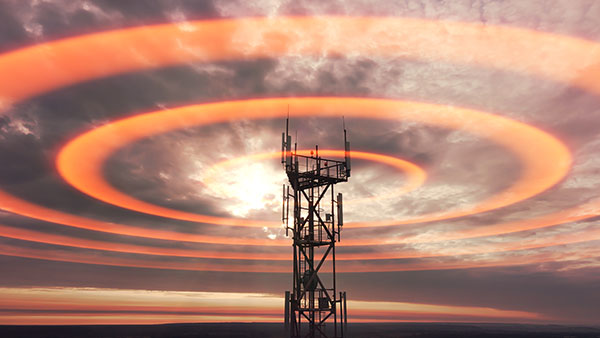U.S. Space Force readies for combat role as global space threats escalate
By richardbrown // 2024-09-03
Tweet
Share
Copy

The United States Space Force is set to transition into a "combat credible arm of the military" to address rising threats from adversaries such as Russia, China and Iran.
Established in 2019 by former President Donald Trump, the Space Force has spent the past five years in its "establishment phase," focusing on organizational development and infrastructure.
As space becomes increasingly weaponized, leaders of the Space Force emphasize the need for heightened preparedness for potential conflicts beyond Earth. (Related: U.S. Space Force: China and Russia are CONCEALING THREATS posed by their satellites.)
During a visit to the U.K., Lt. Gen. David N. Miller underscored the shift from establishment to operational capability.
Speaking at the U.S. Embassy in London, Miller said: "We are moving from establishment into developing the Space Force into a combat-credible military service. The inclusion of space as an operational domain for warfighting is becoming increasingly apparent. To compete, deter and prevail in today’s environment, we need to adopt approaches similar to those used in traditional military domains."
Chief Master Sergeant Caleb M. Lloyd highlighted the evolving nature of the space domain. "We recognize and discuss space as a warfighting domain. Our focus is on the development of our personnel to meet these new challenges," Lloyd said.
Recent developments include the U.S. accusing Russia of deploying a counter-space weapon capable of targeting satellites in low Earth orbit in May. This incident underscores the urgency for the Space Force to enhance its capabilities and readiness.
U.S. signs agreement with U.K. and Australia to develop DARC
The Space Force, the first new U.S. military branch since World War I, is also looking to strengthen its partnership with the U.K. through the Government’s Strategic Defense Review. This review is expected to provide opportunities for increased collaboration and support. In addition to their U.K. visit, the Space Force delegation is involved in the construction of a new Deep Space Advanced Radar Capability (DARC) base at Cawdor Barracks in Wales, set to be developed over the next few years. Last December, the United States, the United Kingdom and Australia signed an agreement to develop DARC, a cutting-edge radar system designed to monitor activities in geosynchronous orbit, which is about 22,236 miles above Earth. This orbit allows satellites to remain fixed over a specific area by synchronizing their orbital period with the Earth's rotation. DARC will offer 24-hour, all-weather radar coverage globally for the three countries involved in the AUKUS security partnership. The initiative aims to enhance space domain awareness by identifying and tracking objects in orbit and addressing emerging threats. According to a U.S. Department of Defense statement, the agreement is intended to "accelerate capabilities that provide trilateral partners with advanced technology for space threat detection." U.S. Chief of Space Operations Gen. Chance Saltzman emphasized the importance of evolving space domain awareness to ensure safe operations. "As the space domain rapidly evolves, we must take deliberate steps to maintain our collective ability to operate safely," he stated. In 2021, the Space Force successfully tested a technology demonstrator for DARC at White Sands Missile Range, New Mexico. Northrop Grumman was awarded a $341 million contract in 2022 to develop the system. The first DARC site is planned for Western Australia, expected to be operational by 2026, with all three sites anticipated to be online by 2030, costing a total of $1 billion. Australian Lt. Gen. John Frewen noted that the DARC site in Australia will integrate with other sites in the U.S. and the U.K., providing global detection and observation of satellites and deterring actions against Australian interests. The location choice is strategic amid rising military tensions in the Indo-Pacific region, particularly concerning China's growing military presence. China operates approximately half of the world's intelligence, surveillance and reconnaissance (ISR) satellites, which are used for monitoring U.S. and allied forces. Recent improvements in China's space-based ISR capabilities include advanced digital cameras and space-based radar. Bookmark Space.news to read more about space-related stories. Watch the video below where a NASA veteran talks about how America can aim higher in the space industry. This video is from the NewsClips channel on Brighteon.com.More related stories:
Former Space Force commander calls for elimination of WOKE IDEOLOGY in the military. U.K. to free VIOLENT CRIMINALS to make jail space for thought crime offenders. Former Space Force officer: WOKE AGENDA weakening, dividing U.S. military. Sources include: The-Sun.com Space.com Brighteon.comTweet
Share
Copy
Tagged Under:
space preparedness Russia China military national security military technology satellites self-defense UK space weapons Australia US big government chaos Space Warfare WWIII progress space force space war weapons tech spy satellites
You Might Also Like
Congressional report: Biden-Harris admin DECEIVED Americans on Afghanistan withdrawal
By Kevin Hughes // Share
Hungary pushes through with plan to bus illegal immigrants to EU capital of Brussels
By Kevin Hughes // Share
ALERT: Salmonella outbreak in multiple states reportedly linked to recalled eggs
By News Editors // Share
Recent News
Verizon outage chaos: Over a million reports filed as service fails nationwide
By isabelle // Share
"Absolute Healing" on BrightU: Experts discuss regenerative medicine and emerging technologies
By jacobthomas // Share
Greenland rejects U.S. annexation push as Trump warns of "big problem" for PM
By bellecarter // Share
Russia warns of Western-backed "color revolution" in Iran as protests turn violent
By ramontomeydw // Share











